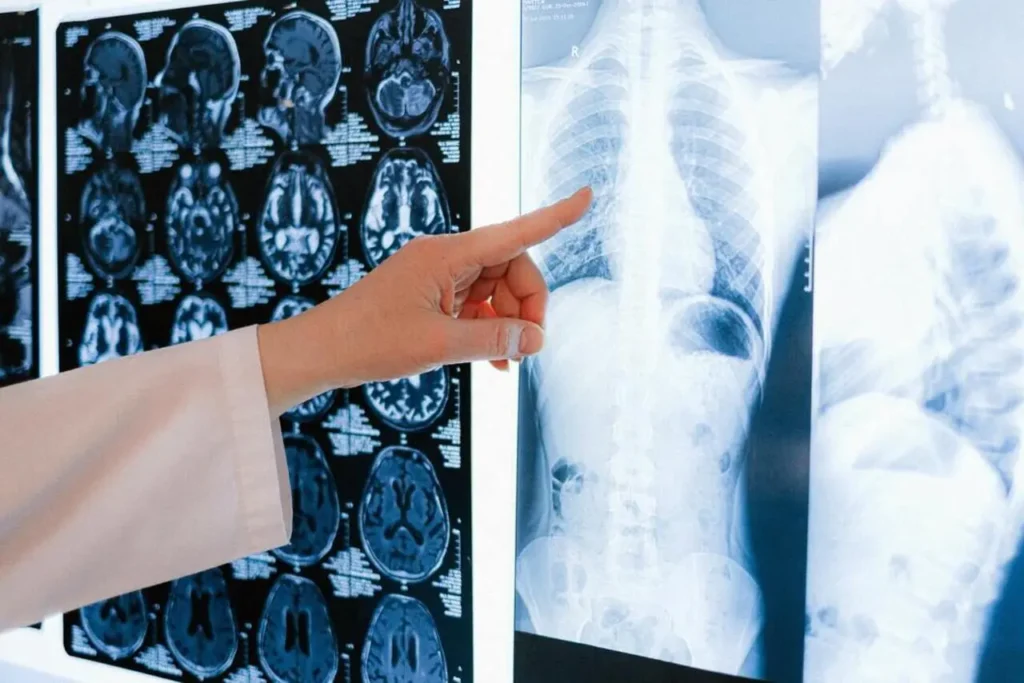We all know smoking is a general health hazard and has a laundry list of negative effects on the human body including being a major risk factor of thins such as respiratory diseases, cancer, and cardiovascular disease. But what about the effect of smoking on your your exercise performance? Does it negatively affect your ability to build muscle? What about energy levels?
Well, it turns out smoking absolutely negatively impacts muscle growth and repair, energy levels, and more, making the case against smoking even more convincing. So get ready to join us on a journey of scientific discovery as we explore the reasons why smoking and exercise performance – or lack thereof – go hand-in-hand.

Smoking and exercise performance – the effects
Common sense dictates that smoking cigarettes – or other substances – has a negative affect on your ability to exercise well. But is that true? Yes, yes it is…so let’s take look at some reasons as to why:
1) Reduced Energy Levels
Smoking has a negative effect on energy levels in many ways. For example, a quick search shows that smokers have significantly more fatigue and depression levels that non-smokers. In additional to not being able to workout as well, it also leads to less motivation than non-smokers.
Smoking also reduces oxygen levels in the body, which leads me to the next point…
2) Reduced lung function

Smoking significantly affects the lungs in a number of ways. Studies have found that smoking reduces the amount of oxygen that is able to get into the lungs, leading to difficulty breathing and, in severe cases, respiratory failure. Smoking can also reduce lung elasticity and increase mucus production, leading to coughing fits and wheezing.
Smoking also has a significant impact on a person’s oxygen level and he chemicals in cigarette smoke can lead to a loss of lung function by up to 30%, making breathing harder. Smoking damages the tiny air sacs in the lungs called alveoli, which are responsible for exchanging oxygen and carbon dioxide. Because smokers have a lower VO2 max (the maximum amount of oxygen a person can consume during exercise) compared to non-smokers, they then have to work harder to achieve the same level of intensity during cardio workouts.
Studies have shown that smoking can lead to decreased blood vessel condition and oxygen saturation levels. Furthermore, smoking has been found to decrease tissue oxygen supply, leading to hypoxia during a significant portion of each day. This can cause symptoms such as fatigue and shortness of breath.

Long-term smokers are at increased risk of chronic obstructive pulmonary disease (COPD), inflammation of the airways, and even lung cancer. Quitting smoking can reverse many of these effects, but those who continue to smoke will experience further decline in their lung function over time.
Oxygen levels of smokers
The typical oxygen levels of smokers vary greatly depending on how much and how often they smoke. When a smoker inhales, the oxygen levels in their blood drop dramatically due to the presence of carbon monoxide in cigarette smoke. The carbon monoxide binds to hemoglobin 200 times more efficiently than oxygen.
Generally, the average blood oxygenation level for smokers is 97%, while the average blood oxygenation level for non-smokers is 98%. Not a big difference, right?

Well, yes and no. Heavy smokers may have up to 8% carbon monoxide hemoglobin (COHb) which can cause their oxygen saturation measured by pulse oximetry to be higher than it actually is. And as mentioned above, decreased oxygen levels can lead to hypoxemia, a condition that is characterized by low oxygen levels in the blood.
3) Decreased cardiovascular fitness
Over time, damage from smoking causes blood vessels to constrict, making it difficult for the body to supply oxygen and nutrients to working muscles. The amount of oxygen in your blood is a reflection of your general health, and it has a direct impact on your VO2 max.
VO2 max is the maximum rate of oxygen consumption attainable during exercise, and it is an important indicator of aerobic fitness. A higher V̇O2 max allows one to produce more energy, thereby performing more work which is why it’s considered the “gold standard” measure of overall aerobic fitness.
4) Decreased muscle growth
Smoking has been linked to a decrease in muscle growth rates. Studies have found that smoking impairs muscle protein synthesis, which in turn decreases your body’s ability to build muscle.
Components in cigarette smoke directly damage muscles, and quitting tobacco improves blood flow and allows more oxygen to reach muscles, helping them thrive. Smokers are also at an increased risk of losing muscle mass, gaining stomach fat, and having difficulty absorbing nutrients like protein which helps repair muscles.
5) Decreased muscle mass and strength

Some studies have found that smoking impairs the ability to build muscle mass and strength. One research study led by a team in Canada showed that smokers had significantly lower levels of muscle strength than non-smokers who completed the same exercises. A year-long study conducted in Israel compared smokers and non-smokers doing resistance training for 12 weeks and found that smokers gained significantly less muscle mass and strength compared to non-smokers.
Another study showed that smoking may contribute to muscle loss and disfunction due to the additional stress on muscle proteins.
That said, another study showed a decrease in muscular endurance but not necessarily a decrease in muscular strength. To be safe, though, it’s probably best to avoid smoking if you’re worried about your skeletal muscles.
6) Smoking and blood pressure
Smoking is known to have a significant impact on your blood pressure. Smoking constricts the blood vessels, making it more difficult for your heart to pump blood. This can cause an increase in your systolic and diastolic blood pressure. In addition, smoking causes plaque buildup in the arteries due to oxidative stress, leading to high cholesterol and hardening of the arteries.
In fact, one study found that smoking just one cigarette negatively impacts your vascular status. These are conditions that can put you at risk for stroke and other cardiovascular problems. Quitting smoking can lead to decreased blood pressure and improved cardiovascular health over time.
7) Increased muscle damage
Smoking causes an elevation of certain enzymes called matrix metalloproteinases, which are responsible for breaking down muscle fibers. This condition can lead to increased muscle damage during exercise. The chemicals in cigarette smoke can also impair muscle regeneration by inhibiting satellite cells and reducing the activity of enzymes responsible for muscle growth and repair. Delayed muscle soreness and decreased muscle recovery can impede one’s progress in muscle building.

Tips for quitting smoking to optimize physical activity. Because smoking can affect a person’s ability to engage in physical activity, smokers wishing to adopt a healthier lifestyle should proactively find ways to quit.
Smoking and body mass index
Lastly, I want to touch on smoking and weight gain. Unfortunately, quitting smoking leads to weight gain in a lot of people. But there’s hope as there is considerable variability in the amount of weight gain (or loss) you’ll experience. For example, in a large population-based study, 16-21% of quitters actually achieved weight loss after smoking.
And while gaining weight is generally not a good thing, another study noted that negatives with any possible weight gain are trumped by the overall positives when you quit smoking.
Now that we know some of the most important health consequences of smoking cigarettes, let’s look at some reasons why you should strive to successfully quit smoking.
Why quit cigarette smoking?
In the short term, quitting smoking will help you breathe easier and reduce coughing. Your sense of smell and taste will also improve, as will your circulation. After two to twelve weeks, you’ll start to notice an increase in energy levels and stamina.
In the long term, quitting smoking can have a dramatic impact on your health. It reduces your risk of heart attack and stroke, as well as cancer of the mouth, throat, esophagus, bladder, cervix and pancreas. It can also lower your risk of developing chronic lung disease or other respiratory illnesses. Quitting smoking can even add years to your life!
If you’re considering quitting smoking, know that there are many resources available to help you succeed. Talk to your doctor about medications that may help with cravings or withdrawal symptoms. You can also join a support group or find online resources for advice and motivation. Quitting smoking is hard work but it’s worth it – make sure you take advantage of all the tools available to help you along the way!
Let’s look at just a few of those now:
Use nicotine replacement therapy
The most effective way for smokers to enhance exercise performance is to cut back on cigarettes. However, nicotine addiction or dependence is very real and quitting abruptly can be challenging, so you may consider using nicotine replacement therapy (NRT). This includes products like nicotine pouches, patches, and gums, and such alternatives can satisfy nicotine needs without smoke or tobacco.

Pouches come in different strengths, and as demonstrated by the Rogue nicotine pouches featured on Prilla, different flavors as well. By delivering alternative flavors such as mango, cinnamon, and honey lemon, smokers may be more likely to stick to the habit of using NRTs rather than going back to smoking, which can help them improve their physical activity levels.
Similarly, Nicotex nicotine patches can help you taper off your tobacco use discretely through an adhesive that delivers nicotine through the skin. Switching to NRTs will ensure you’re in good shape without experiencing withdrawal symptoms that may decrease your motivation to exercise.
Seek online and offline support
Seeking support is a crucial step in quitting smoking to maximize workout performance. Joining local community support groups can provide the encouragement and accountability needed to stay on track and reach your fitness and smoking cessation goals. These groups can also offer a sense of camaraderie as you go through the process of quitting smoking.
In addition, consider utilizing online resources such as meditation apps like Headspace and Calm to cope with smoking triggers. These apps can also help you focus on your breathing and develop relaxation techniques, which can benefit physical conditioning. Surrounding yourself with a supportive community and resources, both offline and online, can help you through the process.
Summary (TL; DR)
Quitting smoking can be a challenging journey, but it’s one worth taking. As you’ve read, smoking has large adverse effects on exercise performance, as it reduces lung capacity, reduces energy, and negatively impacts your ability to build and maintain muscle.
Additionally, smoking increases tissue inflammation which can further reduce performance. All these factors combine to make it difficult for smokers to maintain an active lifestyle and reach their desired level of physical fitness.
Although it takes time, patience, and persistence, the benefits it can bring to your overall health and exercise performance are (almost) immeasurable.
FAQs
Does smoking affect muscle growth?
While the research isn’t fully developed, many studies do indicate that smoking negatively affects your body’s ability to grow and repair muscle. Additionally, muscular endurance is negatively impacted.








